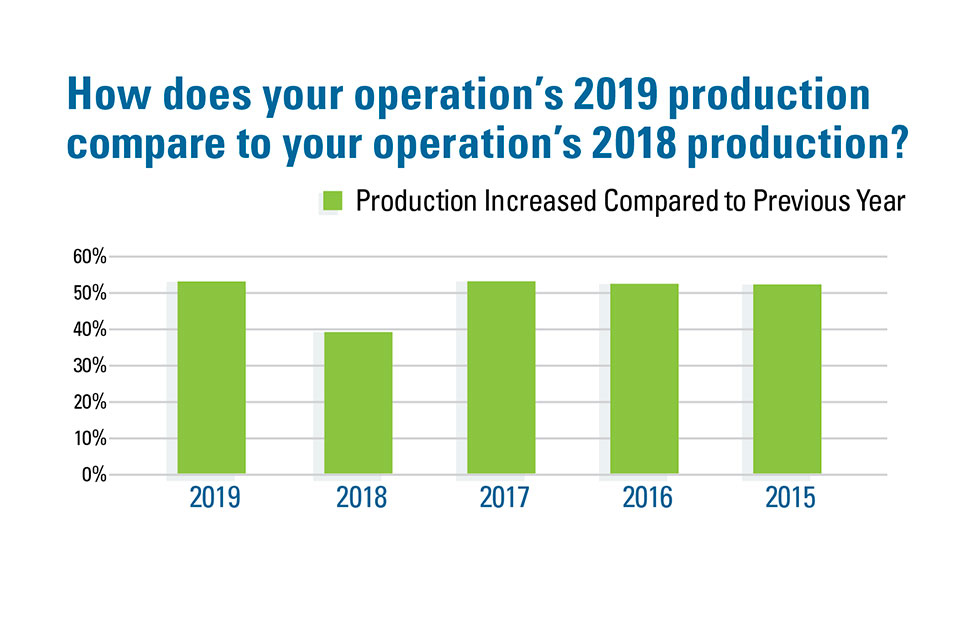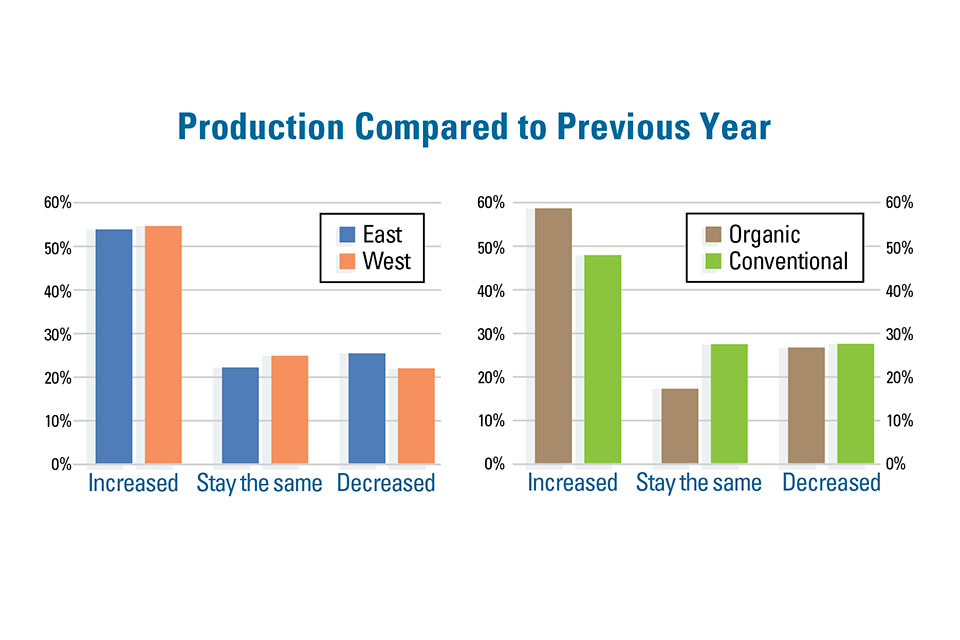Vegetable Production Increased Last Year
American Vegetable Grower invited me to analyze the production portion of its 2020 State of the Vegetable Industry Survey. While I wrote a previously published summary, I also conducted a deeper analysis, question by question.
This is the first article in a series, each one focusing on a different question in the survey. First up? How 2019 production compares to 2018.
How Growers Answered This Question
Let’s start with a straightforward analysis. How did you respond to the question?

- Overall, 75% of growers responded that their 2019 production was flat or increased in 2019 compared to 2018.
- More than 50% of growers (52.9%, to be exact) responded that their production increased in 2019.
- About 40% of growers responded that production increased 5% or more in 2019.
Comparing Increased Production Over the Years
Let’s put this in perspective. Are the number of growers saying they increased production last year unusual? It isn’t. Vegetable production increased in 2019 comparable to or greater, than the previous four years.
 Comparing Regions and Organic/Conventional Responses
Comparing Regions and Organic/Conventional Responses
You can gain insight when you compare how different groups answered this question.

When comparing growers from the East vs. the West:
- Growers responded that their 2019 production was comparable, regardless of growing location.
- No large differences were observed between Eastern vs. Western vegetable growers.
When comparing growers who responded that they grew organic crops vs. growers who responded that they did not grow organically:
- A greater percentage of organic growers (~12 percentage points more) reported increased production in 2019 compared to 2018.
- In contrast, a greater percentage of conventional only growers (~12 percentage points more) reported production stayed the same in 2019 compared to 2018.
- The percentage of growers who reported that production decreased was comparable for both groups (~26%).
- Similarly, the percentage of growers who reported that production stayed the same or increase (combining the two groups) was comparable for both groups — ~73%.
Thank you to our sponsors!












